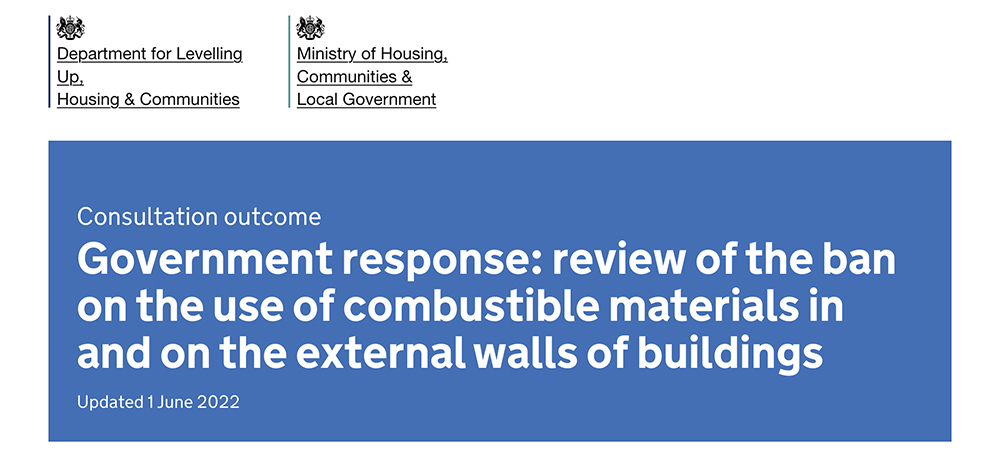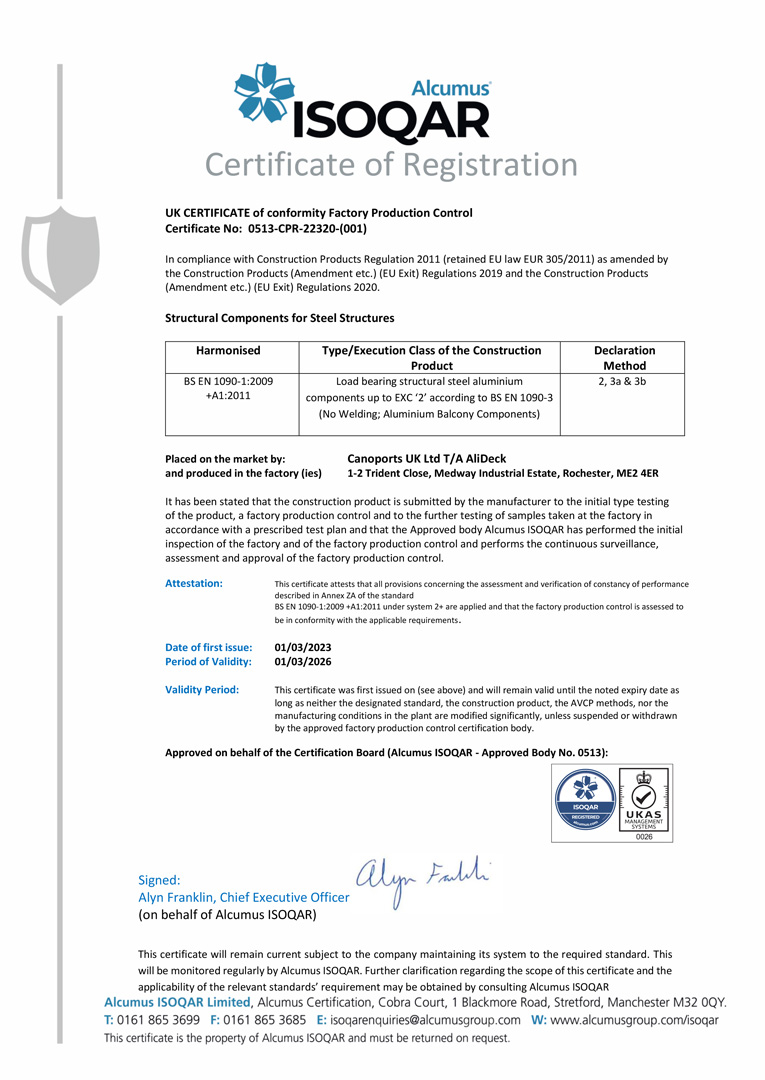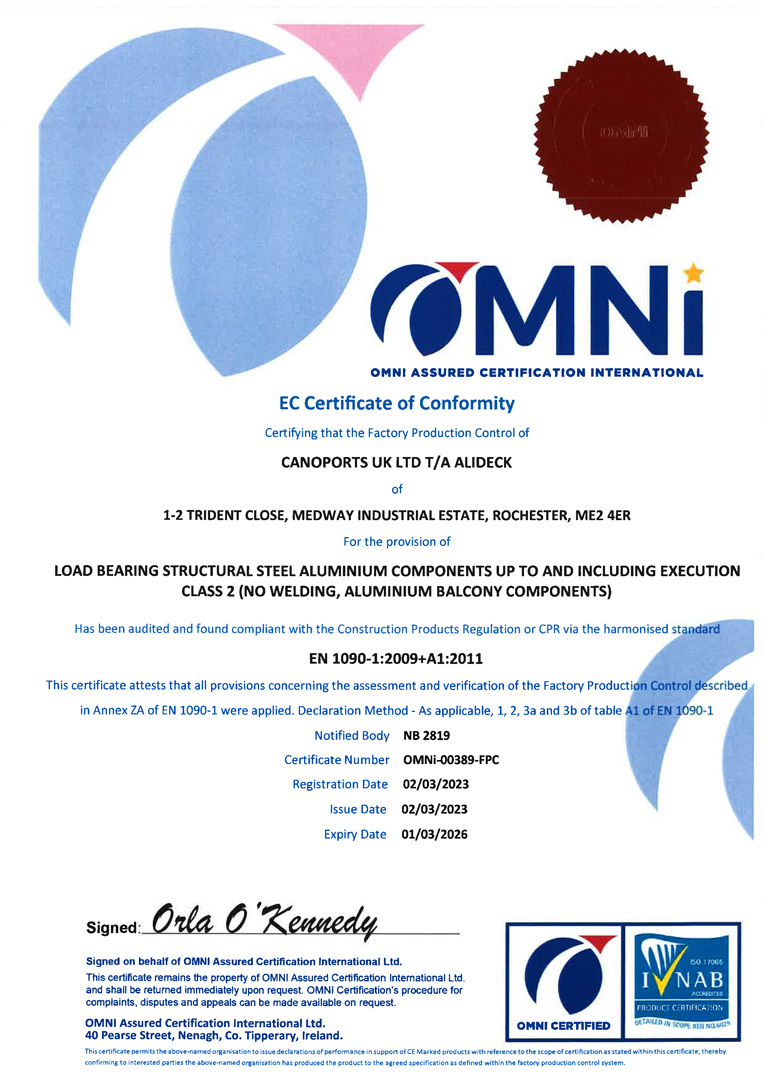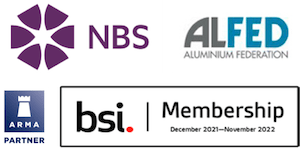Government consultation outcome published on the review of the ban on the use of combustible materials in and on the external walls of buildings with significant implications for balconies
A major consultation recently concluded, reviewing the ban on the use of combustible materials in the external envelope of buildings. A response from Government has now been published to the consultation submissions and it contains several major amendments to Building Regulations and Approved Document B.

In 2018, the Government banned the use of combustible materials in external wall systems of buildings above 18m in height. A subsequent amendment in 2019 was made to include balconies within the definition of specified attachments to the external walls and therefore within scope of the ban. Building Regulations were updated to reflect these changes and the construction industry has shifted its design practices accordingly.
In January 2020, Government proposed further amendments to the ban and launched a consultation seeking views from industry and other stakeholders. The consultation closed in May 2020 and, following extensive analysis, the following changes will be implemented in 2022:
- Change the building types included within the ban – The legislation will bring hotels, hostels and boarding houses within scope.
- Metal Composite Materials – The legislation will introduce a complete ban on the use of the type of metal composite material that was used on Grenfell Tower (metal composite material with an unmodified polyethylene core) in the external walls of all new buildings and buildings undergoing building works, regardless of height or use.
- Attachments – The legislation will include curtains and slats of solar shading devices within scope of the ban, with a limited exemption for ground floor awnings.
- Exemptions – The legislation will amend the list of materials exempted from the combustible materials ban to include fibre optic cables and insulation up to 300mm from ground level. We will also provide an 18-month temporary relaxation for cavity trays in all forms of construction.
- Performance Requirements – The legislation will update the classification that materials must meet to comply with the combustible materials ban to the current version and allows the top layer of a balcony floor to meet the required standard using the horizontal-testing equivalent of the existing standard (which requires materials to be tested vertically).
New Guidance for buildings between 11m and 18m in height; major implications for balconies
Part of the consultation was on whether the ban on combustible materials should be extended to buildings of 11m in height. The majority of respondents disagreed with this blanket restriction, considering it as a “blunt instrument” with disproportionate consequences. Government agreed and has retained the blanket ban on combustible materials to buildings 18m and higher. However, it was recognised that specific wall elements on buildings below 18m could pose risk and that a nuanced approach was required.
Accordingly, the Government is issuing an amendment to Approved Document B to introduce new guidance for external walls and balconies for residential buildings between 11m and 18m in height, and this change will take effect in England on 1 December 2022.
Amongst the interesting detail in this amendment is the exemption of A1fl and A2fl-s1 rated balcony decking from the requirement for A2-s1, d0 fire rating, but only if “the entire layer has an imperforate substrate under it”.
The direct quotes of the relevant sections (from pp16-17 of the amendment document) are as follows;
(2) Subject to paragraph (3), building work shall be
carried out so that materials which become part
of an external wall, or specified attachment, of a
relevant building are of European Classification A2-s1,
d0 or A1 (classified in accordance with the reaction
to fire classification)
…
(3) Paragraph (2) does not apply to—
…
(k) materials which form the top horizontal floor
layer of a balcony which are of European
Classification A1fl or A2fl-sl (classified
in accordance with the reaction to fire
classification) provided that the entire layer has
an imperforate substrate under it.
Further changes within the 11m – 18m amendment are a complete rewrite of Section 10: Resisting fire spread over external walls.
This section now contains guidance for balconies which states that for “buildings that include a ‘residential’ purpose with a storey 11m or more in height” they should “only contain materials achieving A1 or A2-s1, d0”, save for the above-mentioned A1fl/A2fl-s1 exemption and other standard exemptions around membranes, gaskets, fixings, etc.
This is a major change, with Approved Document B previously limiting the ban on combustible materials to buildings greater than 18m in height. Now, from 1st December 2022, balconies on buildings greater than 11m in height are included within the ban on combustible materials.
Changing the list of exemptions to the ban on combustible materials and a new look at laminated glass for balconies
The issue of laminated glass on balconies has been a difficulty for the industry since the original 2018 ban, as the A2-s1, d0 requirement has not been able to be met due to the combustible interlayer used in laminated glass (this is despite laminated glass being permissible for use in windows!).
The consultation asked respondents whether laminated glass should continue to have to achieve A2-s1, d0 when used in balconies. Interestingly, almost as many respondents disagreed with continuing the requirement as agreed with it (26% disagree vs 28% agree), while 46% responded “Don’t know”.
That such a large proportion of respondents could not express a firm opinion is a concern but it, along with the near parity between agree and disagree responses, perhaps suggests a considerable lack of knowledge on the issue outside glass and balcony balustrade specialists.
Respondents were able to provide evidence to support their viewpoint, and the low fire risk of laminated glass along with its “overriding benefits” was highlighted. The apparent anomaly between the allowed use of laminated glass in windows while it is banned in balustrades was also raised.
Many respondents used this opportunity to call for a research programme to establish the extent of any risk posed and to develop an agreed solution for appropriate use of glazed balustrading. Other outlined that they considered laminated glass a genuine risk, including concerns over falling panels and droplets.
In its response, the Government stated that it is currently undertaking research on laminated glass in balconies and will make an informed decision on exemption of laminated glass from A2-s1, d0 once it has the necessary evidence. Until then, laminated glass will continue to require A2-s1, d0 when used in balcony construction.
Implementation
The changes outlined above and in the consultation response will be implemented through changes to Approved Document B and the Building Regulations. The changes will come into force on December 1st 2022.
All stakeholders involved in new-build construction must take note and incorporate these amendments into their future planning. The AliDeck team is available to help industry understand how to achieve compliance with their balcony designs and you can contact us on 01622 235 672 or email info@alideck.co.uk.








